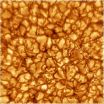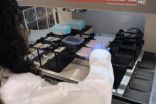(Press-News.org) Using biological samples taken from patients and state-of-the-art biochemical techniques, a Florida State University researcher is working to identify a variety of "biomarkers" that might provide earlier warnings of the presence of breast and prostate cancers.
"Biomarkers are indicators of certain biological and pathological processes that are occurring, such as cancer," said Qing-Xiang "Amy" Sang, a professor in Florida State's Department of Chemistry and Biochemistry. "Either the cancer cells themselves, or surrounding normal tissue for that matter, can produce specific proteins or exhibit other biological changes that provide a signal that something unusual is taking place. Different types of cancer produce different biomarkers, so the challenge is to identify the most effective one for each type of the disease."
For more than 15 years, Sang and her colleagues have focused their efforts on two types of cancers that are particularly prevalent in the United States: breast and prostate. National Cancer Institute statistics illustrate the enormity of the problem:
An estimated 207,090 American women and 1,970 men were expected to be diagnosed with breast cancer during the year 2010, with 39,840 women and 390 men dying from the disease. It is the second most frequent type of cancer and second leading cause of cancer death among American women.
An estimated 217,730 American men were expected to be diagnosed with prostate cancer in 2010, with 32,050 men dying. It is the most frequent type of cancer and the second leading cause of cancer death among American men.
"The U.S. Food and Drug Administration has recognized three separate biomarkers for the identification of breast cancer and one for prostate cancer," Sang said. "But if we can identify new and more accurate biomarkers that offer even earlier glimpses of these diseases, we stand a better chance of offering patients the most customized treatment possible, then, being able to closely monitor their progress, provide follow-up treatment as needed. With earlier diagnosis and treatment, the end result will hopefully be fewer people dying from these cancers."
Sang and five colleagues recently co-wrote a paper published in the cancer research journal Clinical and Experimental Metastasis that could set the stage for breakthroughs in the identification of new biomarkers for breast cancer. Their paper, "Alteration in Protein Expression in Estrogen Receptor Alpha-Negative Human Breast Cancer Tissues Indicates a Malignant and Metastatic Phenotype," (http://www.springerlink.com/content/wqrh887k711729g0/) noted that most research efforts involving breast cancer have focused on epithelial cells — cells that line the surfaces of structures throughout the body — while paying less attention to the stromal cells, or connective cells, that lie beneath them. Those stromal cells, however, may play a larger role in the spread of breast cancers than was previously known, and measuring the number and amount of immunoreactive and metastasis-suppressing proteins that they produce could provide an early indication of how likely the cancer is to metastasize.
(Working with Sang on the Clinical and Experimental Metastasis paper were postdoctoral associate Ziad J. Sahab and graduate students Suzan M. Semaan and Robert G. Newcomer, all from the FSU Chemistry and Biochemistry Department, as well as Yan-Gao Man of the Armed Forces Institute of Pathology and American Registry of Pathology in Washington, D.C. and Stephen W. Byers of the Lombardi Comprehensive Cancer Center, also in Washington.)
Sang recently co-wrote another paper, this one published in the Journal of Cancer, that focused on possible new approaches for identifying and treating prostate cancer. In "Protein Profiling of Isolated Leukocytes, Myofibroblasts, Epithelial, Basal, and Endothelial Cells from Normal, Hyperplastic, Cancerous, and Inflammatory Human Prostate Tissues," (http://www.jcancer.org/v01p0070) she, Ziad J. Sahab, her graduate student Zahraa I. Khamis at FSU and collaborator Kenneth Iczkowski of the University of Colorado Health Science Center examined the crucial role that stromal cells play in tumor development and invasion. Advanced analyses of normal stromal cells and "reactive," or tumor-associated, stromal cells in prostate tissue showed key differences in the patterns of proteins that were expressed by each. This suggests that targeting the so-called tumor "microenvironment" — the precise location where cancer cells interact with and sometimes alter epithelial and stromal cells — may lead to the identification of new biomarkers produced by stromal cells, thereby providing a promising opportunity for prostate cancer prevention and treatment.
A number of organizations are helping to fund Sang's various cancer research efforts. They include the U.S. Department of Defense's U.S. Congressionally Directed Medical Research Programs, the Susan G. Komen for the Cure Breast Cancer Foundation, the Florida Breast Cancer Coalition Research Foundation, the Elsa U. Pardee Foundation, and a Program Enhancement Grant from the Florida State University Research Foundation. In all, approximately $940,446 is helping Sang to advance her work in these areas.
"Many frequently fatal diseases, including cancers of the lungs, liver, pancreas, and colon, as well as heart disease, asthma, and cystic fibrosis, currently have no FDA-approved biomarker that can be used to diagnose them early and allow doctors to get a jump on treating them," Sang said. "So while I'm hopeful that our current research will lead to more effective biomarkers for breast and prostate cancer, I would also be very pleased if it could provide other scientists with the knowledge they need to take on these other diseases as well."
INFORMATION:
An earlier start on diagnosing breast, prostate cancers
2011-01-11
ELSE PRESS RELEASES FROM THIS DATE:
Protein thought to protect against oxidative stress also promotes clogging of arteries
2011-01-11
UCLA researchers have found that a protein that plays an important role in some antioxidant therapies may not be as effective due to additional mechanisms that cause it to promote atherosclerosis, or clogging of the arteries.
Published in the January issue of the journal Arteriosclerosis, Thrombosis and Vascular Biology, the finding may give clues as to why some antioxidant therapies have not yielded more positive results.
The protein, called Nrf2, has been thought to be an important drug-therapy target for diseases such as cancer because it can induce chemopreventive ...
New species of flying reptile identified on B.C. coast
2011-01-11
Persistence paid off for a University of Alberta paleontology researcher, who after months of pondering the origins of a fossilized jaw bone, finally identified it as a new species of pterosaur, a flying reptile that lived 70 million years ago.
Victoria Arbour says she was stumped when the small piece of jaw bone was first pulled out of of a fossil storage cabinet in the U of A's paleontology department.
"It could have been from a dinosaur, a fish or a marine reptile," said Arbour. "
Arbour, a PhD student in paleontology, says the first clue to the fossil's identify ...
New glass tops steel in strength and toughness
2011-01-11
Glass stronger and tougher than steel? A new type of damage-tolerant metallic glass, demonstrating a strength and toughness beyond that of any known material, has been developed and tested by a collaboration of researchers with the U.S. Department of Energy (DOE)'s Lawrence Berkeley National Laboratory (Berkeley Lab)and the California Institute of Technology. What's more, even better versions of this new glass may be on the way.
"These results mark the first use of a new strategy for metallic glass fabrication and we believe we can use it to make glass that will be even ...
How do you make lithium melt in the cold?
2011-01-11
Washington, D.C. — Sophisticated tools allow scientists to subject the basic elements of matter to conditions drastic enough to modify their behavior. By doing this, they can expand our understanding of matter. A research team including three Carnegie scientists was able to demonstrate surprising properties of the element lithium under intense pressure and low temperatures. Their results were published Jan. 9 on the Nature Physics website.
Lithium is the first metal in the periodic table and is the least dense solid element at room temperature. It is most commonly known ...
First strawberry genome sequence promises better berries
2011-01-11
DURHAM, N.H. – An international team of researchers, including several from the University of New Hampshire, have completed the first DNA sequence of any strawberry plant, giving breeders much-needed tools to create tastier, healthier strawberries. Tom Davis, professor of biological sciences at UNH, and postdoctoral researcher Bo Liu were significant contributors to the genome sequence of the woodland strawberry, which was published last month in the journal Nature Genetics.
"We now have a resource for everybody who's interested in strawberry genetics. We can answer questions ...
New insights into sun's photosphere reported by NJIT researcher at Big Bear
2011-01-11
NJIT Distinguished Professor Philip R. Goode and the research team at Big Bear Solar Observatory (BBSO) have reported new insights into the small-scale dynamics of the Sun's photosphere. The observations were made during a period of historic inactivity on the Sun and reported in The Astrophysical Journal . http://iopscience.iop.org/2041-8205/714/1/L31 The high-resolution capabilities of BBSO's new 1.6-meter aperture solar telescope have made such work possible.
"The smallest scale photospheric magnetic field seems to come in isolated points in the dark intergranular ...
Body dysmorphic disorder patients who loathe appearance often get better, but it could take years
2011-01-11
PROVIDENCE, R.I. [Brown University] — In the longest-term study so far to track people with body dysmorphic disorder, a severe mental illness in which sufferers obsess over nonexistent or slight defects in their physical appearance, researchers at Brown University and Rhode Island Hospital found high rates of recovery, although recovery can take more than five years.
The results, based on following 15 sufferers of the disease over an eight-year span, appear in the current issue of the Journal of Nervous and Mental Disease.
"Compared to what we expected based on a prior ...
Debunking solar energy efficiency measurements
2011-01-11
In recent years, developers have been investigating light-harvesting thin film solar panels made from nanotechnology –– and promoting efficiency metrics to make the technology marketable. Now a Tel Aviv University researcher is providing new evidence to challenge recent "charge" measurements for increasing solar panel efficiency.
Offering a less expensive, smaller solution than traditional panels, Prof. Eran Rabani of Tel Aviv University's School of Chemistry at the Raymond and Beverly Sackler Faculty of Exact Sciences puts a lid on some current hype that promises to ...
Study identifies new genetic signatures of breast cancer drug resistance
2011-01-11
A new study conducted by Josh LaBaer's research team in the Biodesign Institute at Arizona State University has pinpointed more than 30 breast cancer gene targets ---including several novel genes---that are involved in drug resistance to a leading chemotherapy treatment.
The results of the study may one day aid in the treatment of the one in ten U.S. women who will develop breast cancer, by empowering physicians with a more personalized approach to therapy as well as a new tool for the early screening of those that may ultimately become resistant to chemotherapy.
Drugs ...
Study estimates land available for biofuel crops
2011-01-11
CHAMPAIGN, Ill. — Using detailed land analysis, Illinois researchers have found that biofuel crops cultivated on available land could produce up to half of the world's current fuel consumption – without affecting food crops or pastureland.
Published in the journal Environmental Science and Technology, the study led by civil and environmental engineering professor Ximing Cai identified land around the globe available to produce grass crops for biofuels, with minimal impact on agriculture or the environment.
Many studies on biofuel crop viability focus on biomass yield, ...




